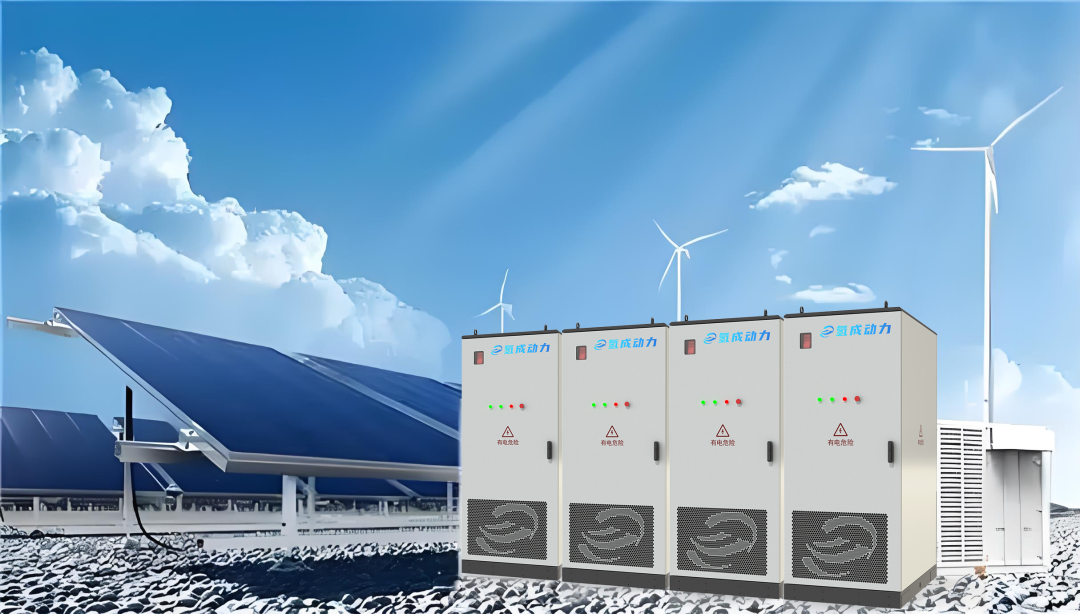Energy Storage Insights: Tracking Industry Hotspots!
Release time:
2025-11-10
Source:
On October 31, the National Energy Administration held its fourth-quarter press conference for 2025, during which it released updates on the nation’s energy situation in the first three quarters, the grid integration and operation of renewable energy sources, the development of electric vehicle charging infrastructure, and how market-oriented mechanisms helped successfully meet the summer peak demand and ensure a stable power supply. At the press conference, a senior official addressing concerns about "negative electricity prices" noted that brief instances of negative pricing can be viewed as a "traffic light" for the electricity market, encouraging power plants to adjust operations more deeply, prompting consumers to shift their usage to off-peak hours, and guiding investments in various new players such as energy storage systems. Additionally, when discussing this year’s investment trends in the energy sector, the National Energy Administration highlighted that nuclear power, power grids, advanced energy storage technologies, and coal-fired power generation have become key drivers boosting growth in major energy projects. A number of independent energy storage projects in Northwest China, Southern China, and North China are accelerating construction. In the first eight months of this year, Xinjiang, Guangdong, Yunnan, Shandong, and Inner Mongolia all reported year-on-year investment growth rates exceeding 100% for their respective new energy storage flagship projects.

National Policies and Headlines
Local Policies and Headlines
On November 3, the Yancheng Municipal People's Government of Jiangsu Province issued the "Notice on Effectively Promoting Direct Green Electricity Connections in Coastal Areas of Our City," which clearly outlines "one county, one strategy" green electricity direct connection plans for seven coastal regions. These seven regions include the Dongtai Coastal Economic Zone, Shayang Port Economic Development Zone, Binhai Port Economic Development Zone, Xiangshui Industrial Economic Zone, Dafeng Port Economic Development Zone, Tinghu District Environmental Science & Technology City, and the Yancheng Economic & Technological Development Zone. The planned green electricity sources will primarily come from wind and photovoltaic projects. Currently, these seven regions already have an installed capacity of 5.8 GW from wind power and 1.5 GW from solar PV. In addition, the seven regions are set to develop approximately 75.5 GW of new green energy projects, including 35.83 GW of wind power and 39.66 GW of solar PV.
02 The Anhui Hefei Municipal Development and Reform Commission has issued the "Notice of the Hefei Municipal Development and Reform Commission on Further Standardizing the Development, Construction, and Operation Management of Distributed Photovoltaic Power Generation Projects."
On November 3, the Development and Reform Commission of Hefei City, Anhui Province, released the "Notice of Hefei Development and Reform Commission on Further Standardizing the Development, Construction, and Operation Management of Distributed Photovoltaic Power Generation" (Draft for Comments). The document states that for distributed photovoltaic projects seeking to connect to areas with limited grid access, it is encouraged to enhance local consumption capacity through integrated solar-storage-charging systems and collaborative, interactive approaches involving energy sources, grids, loads, and storage.
03 The Jilin Provincial Energy Bureau releases its reply document on "Suggestions for Strengthening Industrial and Commercial Energy Storage Development in Jilin Province"
On October 30, 2025, the Jilin Provincial Energy Administration released its reply document titled "Suggestions on Strengthening Industrial and Commercial Energy Storage Development in Jilin Province." The document emphasized that, aligned with national policy guidelines, the province will actively promote the establishment of new energy storage market mechanisms and continuously update and refine trading rules in response to market dynamics, thereby fostering the healthy and orderly development of innovative energy storage solutions.
In April of this year, the Jilin Provincial Energy Administration issued the "Jilin Province New Energy Storage High-Quality Development Plan (2024–2030)," emphasizing the need to accelerate the establishment of comprehensive access criteria, trading mechanisms, technical standards, and price-setting frameworks for new energy storage systems to participate in various electricity markets. The plan also highlights the importance of actively promoting the development of market-oriented mechanisms for new energy storage, thereby fostering the healthy and orderly growth of this emerging sector.
On October 30, the Northwest Energy Regulatory Bureau issued the "Implementation Rules for Inter-Provincial Medium- and Long-Term Electricity Trading in the Northwest Region—Special Chapter on New Energy Storage Trading," which clearly states that new energy storage trading refers to medium- and long-term electricity contracts whose underlying assets are the charging and discharging volumes of advanced energy storage power stations.
05 The Energy Bureau of the Hubei Provincial Development and Reform Commission has issued the "Notice on Orderly Promoting the Construction of Direct Green Power Connection Projects."
On October 29, the Energy Bureau of Hubei Provincial Development and Reform Commission issued a notice on the orderly promotion of green electricity direct-linkage project construction. The document clearly states that the plan should include details such as power sources, load centers, direct-linkage lines, grid connection systems, and energy storage facilities. Regarding the energy storage facility configuration plan, it emphasizes the need for rational deployment of storage systems to enhance the system's regulation capabilities and meet requirements like managing peak-to-valley differences and ensuring high-quality power supply.
New energy facilities and load centers should, in principle, be located within the same county (city, district) or in two adjacent counties (cities, districts). The capacity of new energy projects should be determined reasonably based on factors such as electricity demand, load characteristics, wind and solar resources, and grid connection distances. The point where user-side connections meet the public grid marks the boundary of ownership. Power generation is primarily absorbed by the connected loads, and operators must ensure an appropriate utilization rate through measures like energy storage systems. Additionally, they are solely responsible for bearing operational risks, including curtailment of wind and solar power.
Viewpoint
On October 31, the National Energy Administration held its fourth-quarter press conference for 2025, during which it released updates on the nation's energy situation in the first three quarters, the grid integration and operation of renewable energy sources, the development of electric vehicle charging infrastructure, and how market-oriented mechanisms helped successfully meet the summer peak-load electricity supply challenges. During the briefing, a senior official addressed the issue of "negative electricity prices," noting that brief instances of negative pricing can be viewed as a "traffic light" for the power market, encouraging power units to adjust operations more deeply, prompting consumers to shift their usage to off-peak hours, and guiding investment and construction in various new players, such as energy storage systems.
Additionally, the National Energy Administration highlighted that nuclear power, power grids, advanced energy storage systems, and coal-fired power plants have become key drivers boosting investment growth in major energy projects this year. A number of independent energy storage projects in Northwest China, South China, and North China are accelerating construction. In the first eight months of this year, Xinjiang, Guangdong, Yunnan, Shandong, and Inner Mongolia saw their investments in new energy storage flagship projects grow by more than 100% year-on-year.
Key words:
Recommended News
Contact
Address: Chanhe Innovation Technology Park, No. 2 Zhenxing Road, Chanhe Hui District, Luoyang City, Henan Province
Tel:0379-63869669
Mailbox:info@hydromobility.cn
Scan

Copyright©2023 Qingcheng Power Technology(Luoyang) Co.,Ltd. This website supports ipv6
Copyright©2023 Qingcheng Power Technology(Luoyang) Co.,Ltd.
This website supports ipv6






